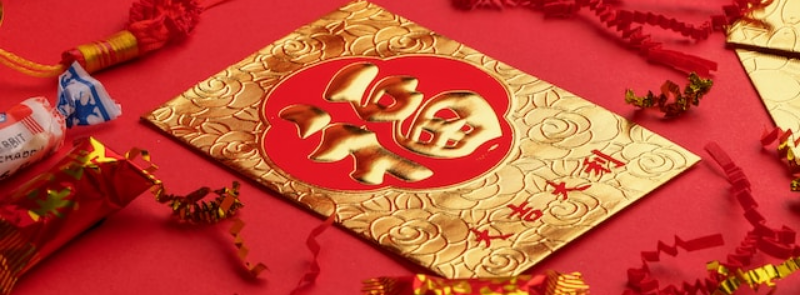
When It Occurs
Second New Moon After Winter Solstice
Timeline
Days Passed (688)
# Hashtags
#LunarNewYear #GuoNian
Lunar New Year, also referred to as "Guo Nian," marks the onset of spring and the commencement of a new year. Recognized as the most significant holiday in China, this celebration is based on the cycles of the moon and sun, causing it to vary in date each year. Typically falling between late January and mid-February, Lunar New Year is observed as a public holiday in numerous countries, including China, South Korea, North Korea, Malaysia, the Philippines, Indonesia, Singapore, Brunei, and Vietnam. It is a time when people often reunite with their families in their hometowns for festive celebrations.
Origin and History
-
Ancient Roots: The origins of Lunar New Year date back over 4,000 years to the Shang Dynasty (1600-1046 BCE) in China. The festival was initially tied to agricultural cycles and ancient religious practices, celebrating the end of winter and the beginning of spring.
-
Legends: One of the most popular legends associated with Lunar New Year is the story of Nian, a mythical beast that would terrorize villages. According to the legend, the villagers used loud noises, firecrackers, and the color red to scare away Nian, which is why these elements are integral to the celebrations.
Timing and Zodiac
-
Date: The date of Lunar New Year varies each year, falling between January 21 and February 20. It is determined by the second new moon after the winter solstice.
-
Chinese Zodiac: Each year is associated with one of the 12 animals of the Chinese zodiac: Rat, Ox, Tiger, Rabbit, Dragon, Snake, Horse, Goat, Monkey, Rooster, Dog, and Pig. Each animal has its own unique characteristics and is believed to influence the personalities and fortunes of those born in that year.
Celebrations and Traditions
-
Preparation: In the weeks leading up to the Lunar New Year, families clean their homes to sweep away bad luck and make way for good fortune. This is known as "sweeping the dust."
-
Reunion Dinner: On New Year’s Eve, families gather for a reunion dinner, often considered the most important meal of the year. Traditional dishes such as dumplings, fish, and sticky rice cakes (nian gao) are served, symbolizing prosperity, abundance, and unity.
-
Red Envelopes: Red envelopes (hongbao) containing money are given to children and unmarried adults to symbolize good luck and ward off evil spirits. The color red is associated with good fortune and joy.
-
Lion and Dragon Dances: Vibrant lion and dragon dances are performed to bring good luck and drive away evil spirits. These performances are often accompanied by the sound of drums, cymbals, and firecrackers.
-
Fireworks: Fireworks are an essential part of the celebrations, believed to scare away evil spirits and bring in the new year with a bang.
-
Decoration: Homes and public spaces are decorated with red lanterns, couplets, paper cuttings, and images of the zodiac animal of the year. Red is the dominant color, symbolizing happiness and good fortune.
-
New Year's Day: On New Year's Day, people dress in new clothes, visit relatives and friends, and participate in various cultural and religious activities. It is also a time for honoring ancestors and deities.
Cultural Variations
-
China: In China, the celebrations last for 15 days, culminating in the Lantern Festival on the 15th day of the first lunar month. Each day has specific customs and traditions.
-
Other Countries: Lunar New Year is also celebrated in other countries with significant Chinese populations, such as Taiwan, Singapore, Malaysia, and Indonesia. Additionally, countries like Vietnam (Tet), Korea (Seollal), and Mongolia (Tsagaan Sar) have their own unique Lunar New Year traditions and practices.
Global Impact
-
Diaspora Celebrations: Lunar New Year is celebrated by Chinese and other Asian communities around the world, including in the United States, Canada, Australia, and Europe. Parades, festivals, and cultural events are held in major cities, fostering multicultural understanding and appreciation.
-
Economic Impact: The holiday season is a significant time for commerce, with increased spending on gifts, decorations, and travel. Businesses often hold special promotions and sales to attract customers.
Conclusion
Lunar New Year is a rich and multifaceted festival that embodies cultural heritage, family unity, and the hope for prosperity and good fortune in the coming year. Through its elaborate traditions, vibrant celebrations, and deep-rooted symbolism, the festival not only marks the passage of time but also reinforces cultural identity and community bonds across generations and borders.


